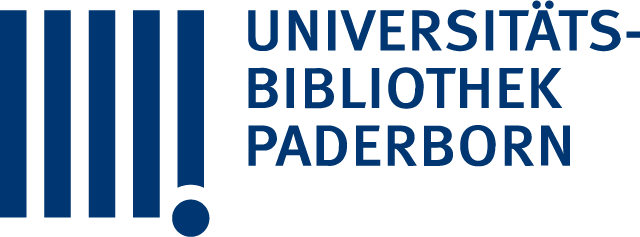Titelaufnahme
- TitelSauerstoffaktivierung und -übertragung durch Kupfer-Komplexe mit polyfunktionellen Guanidinliganden / Roxana Haase
- Autor
- Erschienen
- UmfangV, 268 S. : graph. Darst.
- HochschulschriftPaderborn, Univ., Diss., 2010
- SpracheDeutsch
- DokumenttypDissertation
- URN
- Social MediaShare
- Nachweis
- IIIF
Deutsch
Die Nutzung von molekularem Sauerstoff als umweltfreundliches und leicht verfügbares Oxidationsmittel ist in der Industrie von großer Bedeutung. Da dieser jedoch gegenüber organischen Substraten wenig reaktiv ist, werden Aktivatoren benötigt. Die Natur hat für die Sauerstoffaktivierung und -übertragung eine effiziente Lösung in Form eines kupferhaltigen Enzyms, der Tyrosinase, gefunden. Durch die Entwicklung von funktiona¬len Modellsystemen für das aktive Zentrum der Tyrosinase soll das Funktionsprinzip des biologischen Vorbildes auf technische Prozesse übertragen werden. Die in Rahmen dieser Arbeit verwendeten biomimetischen Hybridguanidinliganden haben sich für die komplexchemische Modellierung der Tyrosinase als besonders geeignet erwiesen. Der Grund hierfür ist nicht nur in den guten Donoreigenschaften der Guanidin-funktion zu sehen, sondern vor allem in dem freien Koordinationsraum, der durch die kleinere Amin-Funktion geschaffen wird und den Zutritt eines Substrates zum Cu2O2-Zentrum erleichtert. Die außergewöhnliche Hydroxylierungsaktivität dieser hybridguani¬din-stabilisierten Cu2O2-Komplexe konnte in Studien zum Sauerstofftransfer auf pheno¬lische Substrate belegt werden. Besonders die Überlegenheit der Bis(µ-oxo)-Spezies [Cu2(TMGdmap)2(µ-O)2][CF3SO3]2 gegenüber den analogen Bisguanidin- und Bisamin-Systemen [Cu2(btmgp)2(µ-O)2][CF3SO3]2 und [Cu2(TMPDA)2(µ-O)2][CF3SO3]2 wurde intensiv untersucht. Durch zahlreiche experi¬men¬telle und theoretische Studien konnte gezeigt werden, dass die anfänglich aufgestellte Arbeitshypothese, bei der eine bessere Zugänglichkeit des aktiven Cu2O2-Zentrums mit einer Zunahme der Hydroxylierungs-aktivität einhergeht, zutreffend war, wodurch der Kupfer-Sauerstoff-Hydroxylierungs-chemie neue Perspektiven eröffnet werden. Im Rahmen dieser Arbeit wurde eine Ligandenbibliothek aufgebaut und der Einfluss der Substituenten auf die Bildung und Stabilität der Cu2O2-Spezies und die resultierende Hydroxylierungsaktivität eingehend untersucht.
Des Weiteren konnte mittels kombinierter EXAFS- und Raman-Spektroskopie erstmals ein Bis(µ-oxo)-dikupferkomplex bei Raumtemperatur in einem optisch angeregten Zustand untersucht werden, wodurch neue Erkenntnisse über die Stabilität und Reaktivität dieses Systems erhalten wurden.
Außerdem konnte ein Cu(I)-Hybridguanidin-Komplex identifiziert werden, der aufgrund seiner hervorragenden elektronischen und sterischen Eigenschaften ein funktionales Modell-system für Typ 1-Kupferzentren darstellt sowie als Kupferkataly¬sator in der Styrol-ATRP verwendet werden kann.
English
The use of molecular oxygen as an environmentally friendly and readily available oxidant is of great importance for technical applications. Due to the low reactivity of O2 with organic substrates, activators are required. Nature has found an efficient solution for the oxygen activation and transfer in the form of the copper-containing enzyme tyrosinase. The development of functional model systems for the active site of tyrosinase targets the transfer of the working principle of the natural system to technical processes.
The biomimetic hybridguanidine ligands used in this thesis prove to be particularly suited for the chemical modeling of tyrosinase. As main reason the good donor properties of the guanidine function can be regarded besides the open coordination space that is created by the smaller amine function and facilitates the entry of a substrate to the Cu2O2 centre. The exceptional hydroxylation reactivity of hybridguanidine stabilised Cu2O2 complexes could be demonstrated in oxygen transfer studies to phenolic substrates. In particular, the superiority of the bis(μ-oxo) species [Cu2(TMGdmap)2(μ-O)2][CF3SO3]2 compared to the analogue bisguanidine and bisamine systems [Cu2(btmgp)2(μ-O)2][CF3SO3]2 and [Cu2(TMPDA)2(μ-O)2][CF3SO3]2 has been studied intensively. Numerous experimental and theoretical studies have shown that the initially established working hypothesis, which associated the improved accessibility of the active Cu2O2 centre with an increase of the hydroxylation reactivity, was correct, which opens up new perspectives in the copper-oxygen hydroxylation chemistry. In this thesis, a ligand library was constructed and the influence of the substituents on the formation and stability of the Cu2O2 species as well as the resulting hydroxylation activity was examined in detail.
Furthermore, by means of combined EXAFS and Raman spectroscopy it was possible to investigate a bis(μ-oxo) dicopper complex at room temperature in an optically excited state for the first time, whereby new insights were obtained regarding the stability and reactivity of this system.
Moreover, a Cu(I)-hybridguanidine complex could be identified which is well suited as functional model system for type 1 copper centres as well as catalyst in the styrene ATRP due to its excellent electronic and steric properties.
- Das PDF-Dokument wurde 86 mal heruntergeladen.

